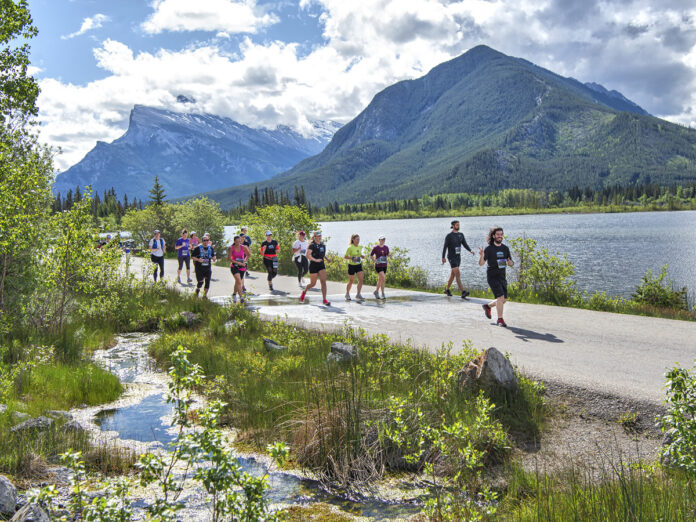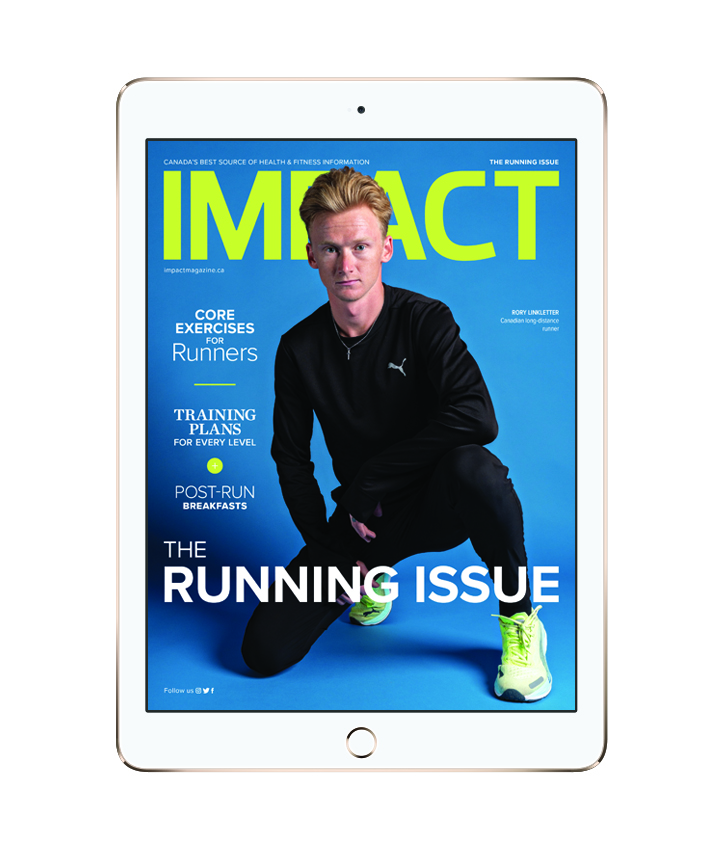
This plan has been designed for a runner who has either recently completed a half-marathon and is looking to step up in distance to the marathon, or for a runner who has run marathons before and is looking to improve their time.
This plan aims to provide a well-balanced schedule for a runner who is already running four to five days a week, with at least one run of one hour in duration. There are built-in recovery weeks, and structured long runs to keep you feeling fresh and engaged in the program. For the recovery weeks you will see a drop in weekly mileage (Tuesday, Thursday, Saturday) after three consecutive weeks of building. The long runs hover around the 20 kilometre mark for weeks three to seven so you have time to adapt to that distance before the long run increases in week eight.
As with any training plan, it is easier done with a group, so encourage your running friends to start this plan with you, or look for running groups in your city.
Legend
Warm-up – Prescribed distance or time running at an easy pace to warm up your body for the harder effort to come.
Cool down – Prescribed distance or time running at an easy pace to help with recovery.
Drills – To help your body warm-up and mobilize. Drills could include dynamic stretching (leg swings, hip hurdles) and/or running drills (ABCs, side shuffles/crossovers).
Easy pace – Running at an effort during which you can maintain a conversation (no need to slow yourself down unnecessarily).
Marathon Pace (MP) – The pace at which you want to run your marathon. This can be adjusted for weather, terrain, altitude, etc.
Half-Marathon Pace (HMP) – Pace at which you ran your last half-marathon, or your goal half-marathon pace.
Strides – 80 – 100 m or 10 – 20 seconds of running at 80 per cent of your sprinting speed. Work into these, where the first and second strides are treated as an acceleration, and you gradually increase the pace every one-third of the distance. For the remaining strides aim to reach your top speed sooner and run smoothly throughout the stride (this is not an all-out sprint, strides are used to get your body primed to run quicker in a workout, or to shake out the legs after an easy run).
Download a PDF of the Training Plan 16 Weeks to Your Best Marathon Time
You may also like: Running the Lydiard Way

Read This Story in Our 2023 Running Issue
Featuring Rory Linkletter, Canadian long-distance runner. Add to your bucket list with the top Destination Marathons Around the World. Train for 10 km right up to a marathon – plus a 70.3 program. Increase your strength and work your core with Canada’s Top Fitness Trainers. Enjoy plant-based, post-run breakfasts and so much more.
















